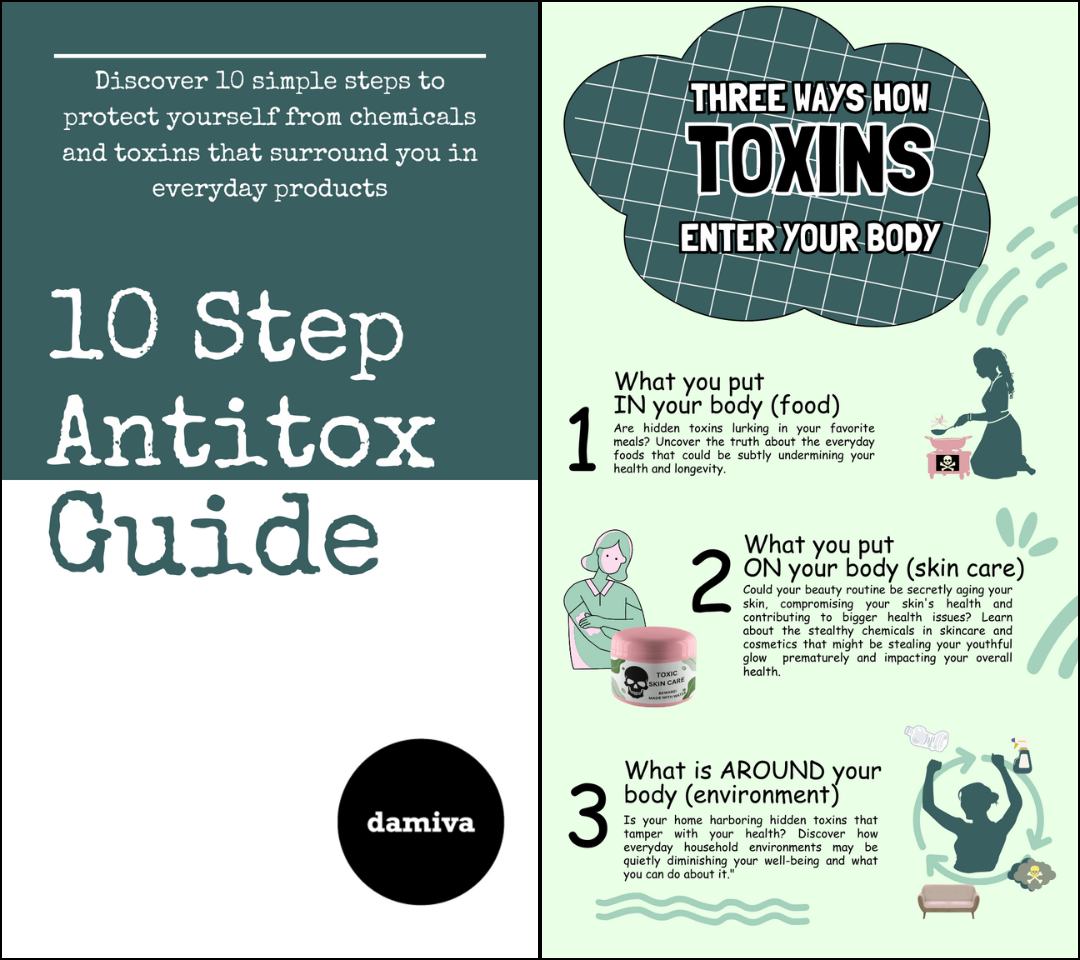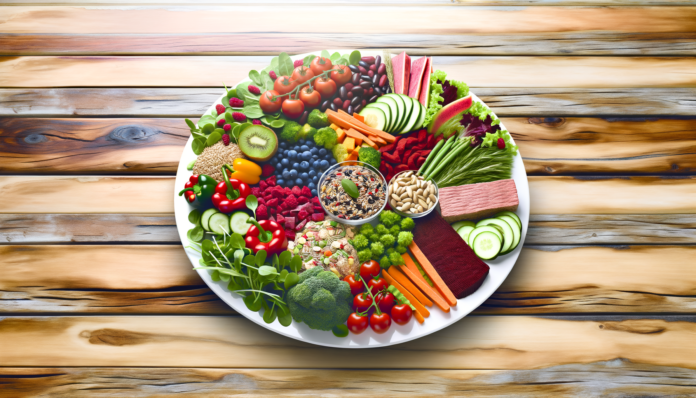Introduction to Hormonal Health
Understanding Hormones and Their Functions
Hormones are biochemical messengers that play a pivotal role in regulating various physiological processes in the body. They are produced by endocrine glands and travel through the bloodstream to tissues and organs, influencing everything from growth and metabolism to mood and reproductive health. Key hormones include estrogen, progesterone, testosterone, insulin, and thyroid hormones, each with specific functions that maintain the body’s homeostasis.
Common Hormonal Imbalances in Women Over 45
As women age, particularly after 45, they are more susceptible to hormonal imbalances due to natural life stages such as perimenopause and menopause. Common hormonal imbalances include:
- Estrogen Dominance: Excess estrogen relative to progesterone can lead to symptoms like weight gain, mood swings, and menstrual irregularities.
- Progesterone Deficiency: Low levels of progesterone can cause irregular periods, anxiety, and sleep disturbances.
- Thyroid Dysfunction: Hypothyroidism or hyperthyroidism can affect metabolism, energy levels, and mood.
- Adrenal Fatigue: Chronic stress can deplete adrenal hormones, leading to fatigue, weakened immunity, and hormonal exhaustion.
These imbalances can manifest in various ways, such as irregular periods, mood swings, weight fluctuations, fatigue, sleep disturbances, and reduced fertility. Understanding these imbalances is crucial for addressing and managing symptoms effectively.
The Importance of Diet in Hormonal Health
Diet plays a critical role in maintaining hormonal balance. The foods we consume can either support or disrupt hormone production and regulation. A hormone-friendly diet emphasizes whole foods rich in essential nutrients, healthy fats, lean proteins, and fiber. Key dietary strategies include:
- Consuming Healthy Fats: Omega-3 and omega-6 fatty acids found in fish, nuts, and seeds are vital for hormone production.
- Balancing Blood Sugar Levels: Eating complex carbohydrates and fiber-rich foods helps stabilize blood sugar, preventing insulin spikes that can disrupt hormonal balance.
- Supporting Gut Health: Probiotic-rich foods like yogurt and kefir promote a healthy gut microbiome, essential for hormone metabolism and absorption.
- Reducing Inflammatory Foods: Avoiding processed foods, refined sugars, and artificial additives can minimize inflammation and support hormonal health.
By making conscious dietary choices, women can significantly influence their hormonal health, leading to improved overall well-being and a better quality of life.
By the way, something for you, a little gift!!!
I am just in the middle of publishing my book. It’s about How women can balance their hormones. One part is about food and diet, of course.
Follow this link and enter your email.
I will send you this part of the book for free once the book is published. It has many concrete, practical tips and recipes and will help you feel better during menopause or times of Big hormonal fluctuations.
Annette, Damiva Lead for Health & Wellness

Key Nutrients for Hormonal Balance
Achieving hormonal harmony involves more than just avoiding certain foods; it also requires incorporating key nutrients that support the endocrine system. Here are the essential nutrients to focus on for maintaining hormonal balance:
Healthy Fats: Omega-3 and Omega-6
Healthy fats are crucial for hormone production and overall hormonal health. **Omega-3 fatty acids**, found in foods like fatty fish (salmon, mackerel, sardines), flaxseeds, and walnuts, are known for their anti-inflammatory properties. These fats help reduce inflammation, which can disrupt hormonal balance. **Omega-6 fatty acids**, found in nuts, seeds, and vegetable oils, are also essential but should be consumed in moderation to maintain a healthy balance with Omega-3s. Including these fats in your diet can help stabilize blood sugar levels and support the production of hormones like estrogen and progesterone.
Proteins: Building Blocks for Hormones
Proteins are the building blocks for many hormones, including peptide hormones like insulin and growth hormone. Consuming adequate protein is essential for the synthesis of these hormones. High-quality protein sources include **lean meats** (chicken, turkey, and grass-fed beef), **fish**, **eggs**, and **plant-based proteins** like beans, lentils, and quinoa. These proteins provide the amino acids necessary for hormone production and help maintain muscle mass, which is crucial for metabolic health.
Vitamins and Minerals: Essential Micronutrients
Vitamins and minerals play a pivotal role in hormonal health. Here are some key micronutrients to focus on:
– **Vitamin D**: Supports the production of sex hormones and can be found in fatty fish, fortified dairy products, and through sun exposure.
– **Magnesium**: Helps regulate cortisol levels and can be found in leafy greens, nuts, seeds, and whole grains.
– **Zinc**: Essential for the production of thyroid hormones and can be found in meat, shellfish, legumes, and seeds.
– **B Vitamins**: Crucial for energy production and hormone synthesis, found in whole grains, meat, eggs, and dairy products.
Ensuring a diet rich in these vitamins and minerals can help maintain hormonal balance and overall health.
Fiber: Supporting Digestive Health
Fiber is essential for digestive health and plays a significant role in hormone regulation. A diet high in fiber helps to stabilize blood sugar levels, which in turn supports balanced insulin levels. Fiber also aids in the elimination of excess hormones, particularly estrogen, by promoting regular bowel movements. Foods rich in fiber include **whole grains** (oats, quinoa, brown rice), **fruits** (berries, apples, pears), **vegetables** (broccoli, Brussels sprouts, carrots), and **legumes** (beans, lentils, chickpeas).
Incorporating these key nutrients into your diet can significantly impact your hormonal health, helping to alleviate symptoms of hormonal imbalance and promote overall well-being.
Foods to Include in a Hormone-Friendly Diet
Leafy Greens and Cruciferous Vegetables
Leafy greens and cruciferous vegetables are powerhouses when it comes to supporting hormonal health. These vegetables are rich in essential nutrients like vitamins A, C, and K, as well as minerals such as magnesium and calcium. Cruciferous vegetables, in particular, contain compounds like diindolylmethane (DIM) and indole-3-carbinol (IC3), which aid in the detoxification of estrogen, helping to maintain a balanced hormonal environment.
- Leafy Greens: Spinach, kale, Swiss chard, and arugula.
- Cruciferous Vegetables: Broccoli, cauliflower, Brussels sprouts, cabbage, and bok choy.
Nuts and Seeds
Nuts and seeds are excellent sources of healthy fats, protein, and fiber, all of which are crucial for hormonal balance. They are rich in omega-3 and omega-6 fatty acids, which are the building blocks for hormone production. Additionally, seeds like flaxseeds and chia seeds contain lignans, which help regulate estrogen levels.
- Nuts: Almonds, walnuts, and Brazil nuts.
- Seeds: Flaxseeds, chia seeds, pumpkin seeds, and sunflower seeds.
Fatty Fish and Lean Proteins
Fatty fish and lean proteins are vital for maintaining hormonal harmony. Fatty fish like salmon and mackerel are rich in omega-3 fatty acids, which help reduce inflammation and support hormone production. Lean proteins provide the amino acids necessary for the synthesis of peptide hormones, such as insulin and growth hormone.
- Fatty Fish: Salmon, mackerel, sardines, and trout.
- Lean Proteins: Chicken breast, turkey, and plant-based proteins like tofu and tempeh.
Whole Grains and Legumes
Whole grains and legumes are excellent sources of complex carbohydrates and fiber, which help stabilize blood sugar levels and support digestive health. Stable blood sugar levels are crucial for maintaining balanced hormone levels, particularly insulin and cortisol.
- Whole Grains: Quinoa, brown rice, oats, and whole wheat.
- Legumes: Lentils, chickpeas, black beans, and kidney beans.
Fruits: Nature’s Sweet Treats
Fruits are not only delicious but also packed with vitamins, minerals, and antioxidants that support overall health and hormonal balance. Berries, in particular, are rich in antioxidants that help reduce inflammation and support the liver in detoxifying hormones.
- Berries: Blueberries, strawberries, raspberries, and blackberries.
- Other Fruits: Apples, pears, oranges, and avocados.
Incorporating these foods into your diet can significantly contribute to hormonal harmony. By focusing on nutrient-dense, whole foods, you can support your body’s natural hormone production and regulation processes, leading to improved overall health and well-being.
Foods to Avoid for Hormonal Harmony
Processed Foods and Sugars
Processed foods and added sugars are some of the biggest culprits when it comes to hormonal imbalances. These foods often contain artificial flavors, preservatives, and colorings that can disrupt your endocrine system. **Added sugars** are commonly found in candy, cookies, cakes, ice cream, soda, sports drinks, and even some breakfast cereals. Consuming too much sugar can lead to insulin spikes, which in turn can lower sex hormone-binding globulin (SHBG). SHBG helps to bind excess estrogen and testosterone, so when its levels are low, these hormones can become elevated, leading to imbalances.
Moreover, insulin spikes can increase testosterone in women, promote chronic inflammation, and disrupt the body’s hunger and fullness signals, making it easier to overeat. To avoid these pitfalls, it’s crucial to read nutrition labels carefully and be aware of the various names for added sugars, such as high fructose corn syrup, sucrose, and dextrose.
Refined Carbohydrates
Refined carbohydrates, such as white bread, pasta, and pastries, can also wreak havoc on your hormonal balance. These “fast-burn” carbs are quickly broken down into glucose, causing rapid spikes in blood sugar and insulin levels. This can lead to insulin resistance over time, a condition that is closely linked to hormonal imbalances, including polycystic ovary syndrome (PCOS) and type 2 diabetes.
Instead of refined carbs, opt for **slow-burn carbohydrates** like whole grains, legumes, and vegetables. These foods provide a more stable release of glucose into the bloodstream, helping to maintain balanced insulin levels and support overall hormonal health.
Caffeine and Alcohol
While a morning cup of coffee or an occasional glass of wine might seem harmless, excessive consumption of caffeine and alcohol can disrupt your hormonal balance. **Caffeine** can elevate cortisol levels, the body’s primary stress hormone. Elevated cortisol can interfere with the balance of other hormones, including insulin and thyroid hormones, leading to issues like weight gain, anxiety, and sleep disturbances.
**Alcohol** disrupts the communication between the nervous, endocrine, and immune systems, leading to hormonal disturbances that impact the entire body. It can also affect liver function, which is crucial for hormone metabolism and detoxification. Reducing your intake of caffeine and alcohol can significantly improve your hormonal health. Consider replacing them with herbal teas and non-alcoholic beverages.
Dairy and Red Meat
Dairy products and red meat can also contribute to hormonal imbalances. **Dairy** often contains synthetic hormones and antibiotics that can interfere with your body’s natural hormone production. Additionally, dairy can increase insulin-like growth factor 1 (IGF-1), a hormone that has been linked to acne and other skin issues.
**Red meat**, especially when consumed in large quantities, can increase levels of estrogen and other hormones. It is also often high in saturated fats, which can promote inflammation and disrupt hormonal balance. Opt for plant-based protein sources or lean meats like chicken and fish to support your hormonal health.
In summary, avoiding processed foods, refined carbohydrates, excessive caffeine and alcohol, and limiting dairy and red meat can go a long way in maintaining hormonal harmony. By making these dietary adjustments, you can support your body’s natural hormone production and improve your overall well-being.
Lifestyle Tips for Supporting Hormonal Health
Stress Management Techniques
Managing stress is crucial for maintaining hormonal balance. Chronic stress triggers the release of cortisol, the body’s primary stress hormone, which can disrupt the balance of other hormones such as insulin, estrogen, and progesterone. Here are some effective stress management techniques:
- Meditation and Mindfulness: Practicing mindfulness and meditation can help reduce stress levels by promoting relaxation and mental clarity.
- Deep Breathing Exercises: Techniques such as diaphragmatic breathing can activate the parasympathetic nervous system, helping to lower cortisol levels.
- Yoga and Tai Chi: These practices combine physical movement with breath control and meditation, offering a holistic approach to stress reduction.
- Journaling: Writing down thoughts and feelings can be a therapeutic way to manage stress and gain perspective.
Importance of Regular Exercise
Regular physical activity is essential for hormonal health. Exercise helps regulate the production and release of various hormones, including insulin, cortisol, and endorphins. Here are some benefits of regular exercise:
- Improved Insulin Sensitivity: Exercise helps muscles use glucose more effectively, reducing the risk of insulin resistance.
- Reduced Cortisol Levels: Physical activity can help lower cortisol levels, especially when combined with stress management techniques.
- Enhanced Mood: Exercise stimulates the release of endorphins, which are natural mood lifters.
- Better Sleep: Regular physical activity can improve sleep quality, which is crucial for hormonal balance.
Aim for at least 150 minutes of moderate-intensity exercise per week, such as brisk walking, swimming, or cycling. Incorporate strength training exercises at least twice a week to build muscle and support metabolic health.
Sleep Hygiene for Hormonal Balance
Quality sleep is vital for maintaining hormonal harmony. Poor sleep can disrupt the production of hormones such as cortisol, insulin, and melatonin. Here are some tips for improving sleep hygiene:
- Establish a Routine: Go to bed and wake up at the same time every day, even on weekends.
- Create a Relaxing Environment: Make your bedroom a sanctuary for sleep by keeping it cool, dark, and quiet.
- Limit Screen Time: Avoid screens at least an hour before bedtime to reduce exposure to blue light, which can interfere with melatonin production.
- Avoid Stimulants: Limit caffeine and alcohol intake, especially in the hours leading up to bedtime.
- Practice Relaxation Techniques: Engage in activities such as reading, taking a warm bath, or practicing gentle yoga to wind down before bed.
Avoiding Endocrine Disruptors
Endocrine disruptors are chemicals that can interfere with the body’s hormonal system. They are found in various everyday products, including plastics, personal care items, and household cleaners. Here are some ways to minimize exposure:
- Choose Natural Products: Opt for personal care and cleaning products that are free from harmful chemicals such as parabens, phthalates, and BPA.
- Avoid Plastic Containers: Use glass or stainless steel containers for food and beverages to reduce exposure to plasticizers.
- Filter Your Water: Use a water filter to remove contaminants that may contain endocrine-disrupting chemicals.
- Eat Organic: Choose organic produce and animal products to reduce exposure to pesticides and hormones.
- Read Labels: Be vigilant about reading labels and choosing products that are free from known endocrine disruptors.
By incorporating these lifestyle tips, you can support your hormonal health and promote overall well-being. Remember, small, consistent changes can lead to significant improvements in hormonal balance.

Popular Read: Endocrine Disruptors in Skincare: What You Need to Know
Sample Meal Plans and Recipes
Breakfast Ideas
Starting your day with a hormone-friendly breakfast can set the tone for balanced energy and mood throughout the day. Here are some nutritious and delicious options:
- Avocado Toast with Poached Eggs: Whole grain toast topped with mashed avocado, a sprinkle of chia seeds, and two poached eggs. This meal provides healthy fats, fiber, and protein.
- Berry Smoothie Bowl: Blend a cup of mixed berries, half a banana, a handful of spinach, and a scoop of protein powder with almond milk. Top with granola, chia seeds, and sliced almonds.
- Greek Yogurt Parfait: Layer Greek yogurt with fresh berries, a drizzle of honey, and a handful of granola. This parfait is rich in protein and probiotics.
- Oatmeal with Nuts and Seeds: Cook oats with almond milk and top with a mix of walnuts, flaxseeds, and a dollop of almond butter. Add a sprinkle of cinnamon for extra flavor.
Lunch and Dinner Options
For balanced hormones, it’s essential to include a variety of nutrients in your main meals. Here are some ideas:
- Grilled Salmon with Quinoa and Steamed Vegetables: A serving of grilled salmon provides omega-3 fatty acids, while quinoa and steamed broccoli and carrots offer fiber and essential vitamins.
- Chicken and Vegetable Stir-Fry: Sauté chicken breast with a mix of bell peppers, broccoli, and snap peas in olive oil. Season with garlic, ginger, and a splash of tamari sauce. Serve over brown rice.
- Lentil and Sweet Potato Curry: Cook lentils with diced sweet potatoes, tomatoes, and coconut milk. Season with turmeric, cumin, and coriander. Serve with a side of steamed spinach.
- Turkey and Avocado Salad: Mix greens, cherry tomatoes, cucumber, and red onion with slices of turkey breast and avocado. Dress with olive oil and lemon juice.
Snacks and Smoothies
Healthy snacks and smoothies can help maintain energy levels and keep hormones balanced between meals. Try these options:
- Hummus and Veggie Sticks: Pair homemade or store-bought hummus with carrot, cucumber, and bell pepper sticks for a fiber-rich snack.
- Almond Butter and Apple Slices: Spread almond butter on apple slices for a combination of healthy fats and natural sugars.
- Green Smoothie: Blend a handful of spinach, half a banana, a scoop of protein powder, and a cup of almond milk. Add a teaspoon of flaxseeds for extra fiber.
- Chia Pudding: Mix chia seeds with coconut milk and a touch of vanilla extract. Let it sit overnight and top with fresh berries in the morning.
Hormone-Balancing Desserts
Indulge in these sweet treats that support hormonal health without the guilt:
- Dark Chocolate and Nut Clusters: Melt dark chocolate and mix with a variety of nuts and seeds. Spoon onto a baking sheet and let cool. These clusters are rich in antioxidants and healthy fats.
- Berry Compote with Greek Yogurt: Simmer mixed berries with a bit of honey until they form a compote. Serve over Greek yogurt for a protein-packed dessert.
- Banana and Almond Butter Ice Cream: Blend frozen banana slices with a spoonful of almond butter until smooth. This dairy-free ice cream is creamy and satisfying.
- Chia Seed Pudding with Mango: Prepare chia pudding as described above and top with fresh mango slices for a tropical twist.
Do you know the 3 main ways how your body is exposed to harmful chemicals, which affect your hormones, your thyroid, health and beauty?
If not, it may be time to learn about them. It takes about 1-2 minutes.
We have a few suggestions how to avoid these silent health and immune system killers in our new guide.

Conclusion and Next Steps
Recap of Key Points
Throughout this article, we have explored the intricate relationship between diet and hormonal health. We began by understanding the fundamental roles hormones play in our bodies and the common imbalances that can occur, particularly in women over 45. We then delved into the key nutrients essential for hormonal balance, such as healthy fats, proteins, vitamins, minerals, and fiber. We also identified specific foods to include in a hormone-friendly diet, like leafy greens, nuts, seeds, fatty fish, whole grains, legumes, and fruits. Conversely, we highlighted foods to avoid, including processed foods, refined carbohydrates, caffeine, alcohol, dairy, and red meat. Additionally, we discussed lifestyle tips for supporting hormonal health, such as stress management, regular exercise, sleep hygiene, and avoiding endocrine disruptors. Finally, we provided sample meal plans and recipes to help you get started on your hormone-friendly diet.
How to Start Your Hormone-Friendly Diet
Embarking on a hormone-friendly diet may seem daunting, but breaking it down into manageable steps can make the transition smoother:
1. **Educate Yourself**: Understand the importance of each nutrient and food group in maintaining hormonal balance.
2. **Plan Your Meals**: Use the sample meal plans and recipes provided to create a weekly menu that incorporates hormone-friendly foods.
3. **Grocery Shopping**: Make a list of the foods you need and stick to it. Focus on whole, unprocessed foods.
4. **Gradual Changes**: Start by incorporating one or two new foods or habits each week. Gradual changes are more sustainable than drastic overhauls.
5. **Monitor Your Progress**: Keep a journal to track how you feel, any changes in symptoms, and your overall well-being.
6. **Seek Support**: Join a community or find a buddy who is also interested in improving their hormonal health. Sharing experiences and tips can be motivating.
Additional Resources and Support
To further support your journey towards hormonal harmony, consider the following resources:
– **Books**: “The Hormone Cure” by Dr. Sara Gottfried and “Hormone Balance Made Simple” by Dr. John R. Lee.
– **Websites**: Visit reputable health websites like the Mayo Clinic, WebMD, and the American Hormone Institute for more information.
– **Healthcare Providers**: Consult with a healthcare professional, such as a nutritionist or endocrinologist, who can provide personalized advice and support.
– **Online Communities**: Join forums and social media groups focused on hormonal health to connect with others and share experiences.
– **Apps**: Use health and wellness apps to track your diet, exercise, and symptoms. Apps like MyFitnessPal and Clue can be particularly helpful.
By taking these steps and utilizing available resources, you can create a sustainable and effective hormone-friendly diet that promotes overall health and well-being. Remember, achieving hormonal harmony is a journey, and every small step you take brings you closer to your goal.











